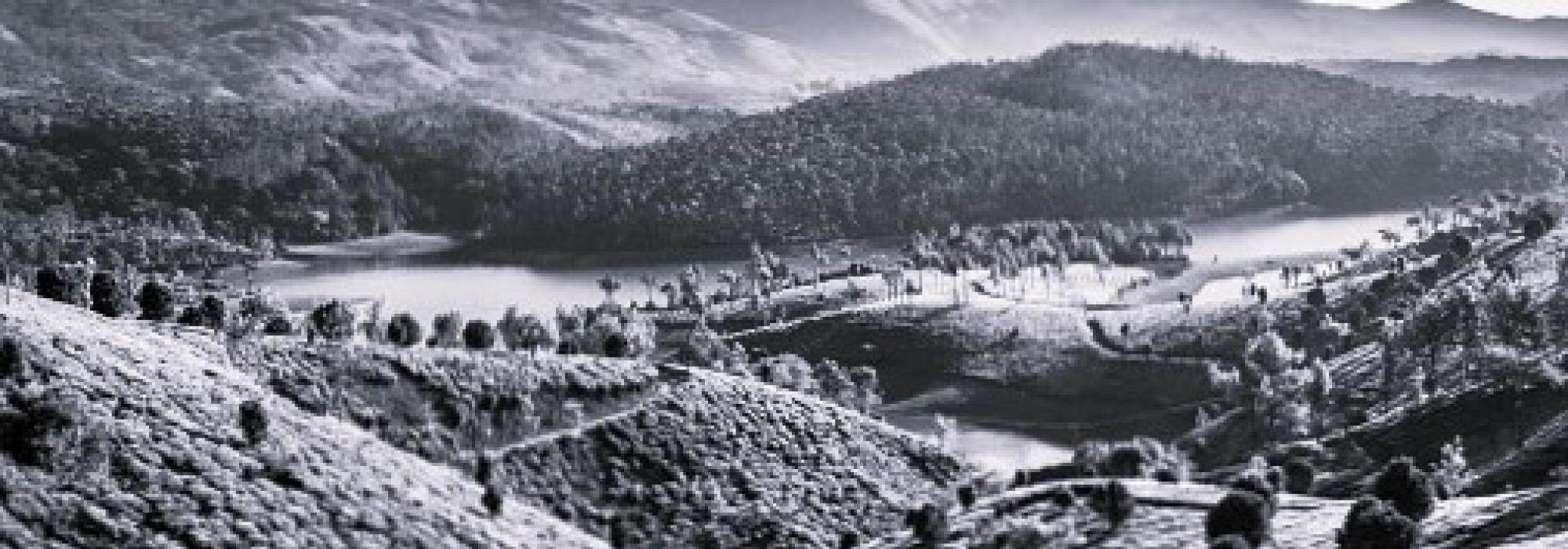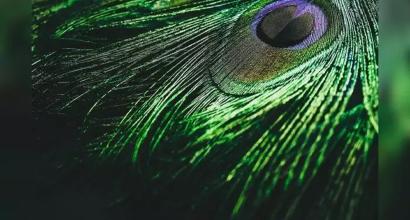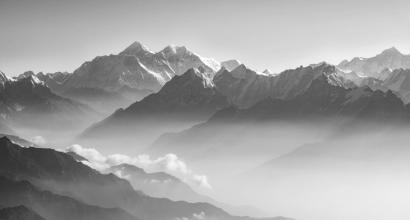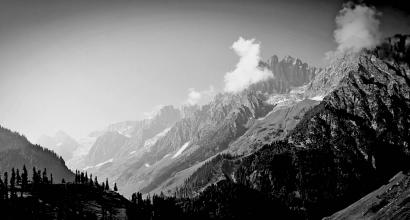97. Takrakauṇḍinya-nyāya
Takra means buttermilk, the householder instructs the cook: "Serve curds to the brāhmaṇas; serve buttermilk to Kauṇḍinya!" Kauṇḍinya too is a brāhmaṇa. From the first instruction, he should get curds, but from the second overrules the first and he gets the buttermilk. First one is a universal or general statement. It is called utsarga. The second one is a specific case. This is called apavāda, apavāda supersedes utsarga. In any prescriptions from the śāstras or in the laws there will always be exceptions. In special cases the general rule isn't applicable, this nyāya is used to illustrate that.
98. Taṭādarśiśakuntapota-nyāya
Ttaṭādarśi is the one looking at the shore, śakuntapota is an offspring of a bird. A ship is sailing across the unending ocean.The offspring of some bird somehow got stuck on the ship and is searching for the shores, sitting on the mast of the ship. It is trying to fly off from the mast in a bid to reach land, but due to its lack of strength it is unable to do so and it returns back to the mast.
This nyāya is used when someone needs to repeat the same activity or present the same opinion out of paucity of choice.
99. Tatsthānāpannaḥ taddharmaṃ labhate
When one reaches the position of someone else, he gains all the attributes of that person. When an officer is transferred to a different place, the one who comes in his place will have all the powers which were previously exercised by the officer. Those powers need not be bestowed upon him afresh nor he has to gain them by effort. Likewise the responsibilities are also transferred. While this nyāya finds itself at home in grammar, even in the day to day activities it is appropriate.
While the common powers and responsibilities get automatically transferred to the new officer, some of the specific traits won't/can't be transferred. The qualities like kāma, krodha etc, or attributes like the looks can't be transferred. Likewise the responsibility of the first officer towards his family too.
There is an apt example from grammar. For the dhātu, 'as' 'bhū' can take its place. Since 'as' is a dhātu, we can say that 'bhū' is a dhātu too. But we can't say that bhū is sakārānta (i.e. ends with 's') just because 'as' is so.
100. Taptaṃ taptena saṃbadhyate
Metal which is hot can be soldered with another piece of metal which is also hot. If there is mutual need, people become friends. If both have love for each other,a relationship would blossom.
If two words occur nearby in a sentence it doesn't mean they have a strong relation. There should be ākānkṣā or intent present. eg."Rāma's son was seen by my friend"
Here, 'seen-by my friend' is the intent. We can't make it read like 'my son' or 'Rāma's friend'.So the meaning can't be 'My son was seen by Rāma's friend'.
Friendship is among equals, be it scholars or thieves. To illustrate such things this nyāya is used.
101.Taptāyaḥ pītāmbu-nyāya
Water if sprinkled on red hot iron will disappear into oblivion in no time. The same happens to a weakling who attacks a powerful foe. All the sañcitakarmas of a brahmajñānin will be burnt in the jñānāgni.
This nyāya can be used in a different sense. Depending on the patron, the qualities of the people who are supported will come to light. Seeds planted in fertile soil give good yield. Same seeds planted in a desert will be burnt. Bhartṛhari. in his work nītiśataka describes this in an exquisite verse:
"A drop of water sprinkled on red hot iron perishes instantly, the same drop on the lotus leaf looks like a pearl. But if it falls into the shell it becomes the pearl itself. This is the nature of inferior, mediocre and superior people respectively."
102.Tamodīpa-nyāya
If one holds a lamp and searches for darkness, can one find it? darkness is opposite to light. If one wants to achieve something using means which are very much the antithesis, this nyāya is used.
103. Taskarakandu-nyāya
Kandu means cook. This nyāya is based on the story where a thief becomes a cook. Once a thief went to the kitchen to remain incognito. There he said that he is a cook, to blend in. But he had no clue about cooking. Since it doesn't involve venturing out he assumed that he can escape from the prying eyes of the police. But since he didn't know cooking he attracted undue attention which led to the police specifically searching for him in the kitchen. He was indeed the thief! There is a proverb in kannada, the import of it is,'The brāhmaṇa who never had done the agnihotra tried without prior experience and burnt his beard and moustache.' Thus the import is, it is dangerous to try things without prior experience.
104. Tilataṇḍula-nyāya
When rice is mixed with sesame seeds it's easy to separate them out. This nyāya is used to illustrate a heterogenous mixture. Mixtures of figures of speech in this manner are called as 'alaṅkāra-saṃsṛṣṭi' by aestheticians. An example is the description of night as follows.
लिम्पतीव तमोऽङ्गानि वर्षतीवाञ्जनं नभः ।
असत्पुरुषसेवेव दृष्टिर्निष्फलतां गता ॥Meaning: 'The darkness looks as though it is smeared to every part, the sky seems as though showering collyrium. Like serving wicked people, the eyes have become futile.'
First sentence has utprekṣā while the second clearly shows upamā.
If the mixture is homogeneous then it comes under the nīrakṣīra-nyāya (water and milk) If figures of speech occur in that sense they contribute to 'alaṅkāra-saṅkara'.
105. Tulonnamana-nyāya
Tula means the weighing balance. Unnamana means to lift. If we lift one pan of the balance the other sinks and vice versa. We can never make both the pans go up. Likewise we do not need extra effort to bring one pan down. If one is brought up, the other goes down without effort.
This is used to illustrate situations where if one is helped, the other is harmed. If one becomes the chief minister, the other should step down. This is tulonnamana-nyāya.
106. Tuṣakaṇḍana-nyāya
There is no use pounding the chaff. When a futile and unnecessary task is to be described, this nyāya is used. Piṣṭapeṣaṇa-nyāya (pounding the powder), jalamanthana-nyāya (churning the water), gardarbharomagaṇana-nyāya (counting the number of hairs on a donkey!) and kākadantaparīkṣā-nyāya (counting the number of teeth a crow has!) describe the same thing.
There is a verse in hitopadeśa
अविचारयतो युक्तिकथनं तुषकण्डनम् ।
नीचेषूपकृतं राजन् वालुकास्विव मूत्रितम् ॥"Instructing strategies without thought is indeed (like) pounding the chaff. Helping wicked people is like urinating in the sand!"
This is the twelfth part of the multi-part translation of the Kannada book "Sandarbha Sukti" by Mahamahopadhyaya Vidwan Dr. N Ranganatha Sharma. Thanks to Dr. Sharada Chaitra for granting us permission to translate this wonderful work. The original in Kannada can be read here







































